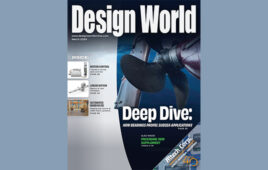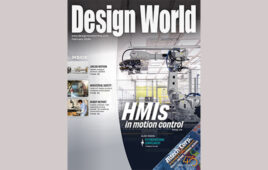In this issue:
21 Ethernet Cabling: helps upgrade F-16 aircraft
58 MOTION CONTROL: Manufacturers respond to the Internet of Things for nextgeneration motion systems.
68 LINEAR MOTION: Surface degradation due to friction typically arises from lubrication problems.
74 MECHANICAL: The range of applications for hinges is expanding and so are the types of positioning technology available.
Wearable robotics as the next big thing?
 Popular movies have long imagined robotic assist type machinery, from the Power Loader exoskeleton that Ripley wore in Aliens to the military weaponry showcased in Starship Troopers and Avatar—not to mention what is basically the entire premise of the Iron Man movies. But, as so often happens, the real world is catching up to the imaginations of science fiction writers.
Popular movies have long imagined robotic assist type machinery, from the Power Loader exoskeleton that Ripley wore in Aliens to the military weaponry showcased in Starship Troopers and Avatar—not to mention what is basically the entire premise of the Iron Man movies. But, as so often happens, the real world is catching up to the imaginations of science fiction writers.
At last month’s Fluid Power Innovation and Research Conference, Professor Thomas G. Sugar of Arizona State University discussed the trends in wearable robots. The key to these devices, Sugar argued, is that we’re getting older as medicine has improved. And for those with disease—say, cancer, heart disease, or diabetes—it’s often harder to walk, to get up and down, to lift objects.
“People are getting older and they still want to walk, they still want to be agile,” Sugar said, noting that sitting is believed to contribute to diabetes, cardiovascular disease, and greater risks of other types of mortality. “We need to walk, so that why wearable systems [are needed]. We need to walk.”
Sugar said that the foundation of technologies for wearables are here now. “We’re got batteries, microprocessors,” he said. “You’ll always need better actuators, but there’s systems out there. Wearable robots are key for the health market, assisted market, manufacturers, military, and recreation.” There is an amazing amount of wearables that are currently in development, including:
• Devices that allow stroke victims to practice repetitive tasks and build up those neural pathways
• Prosthetics that can test for stiffness in an individual user and tune for it
• Rehabilitation exoskeletons attached to treadmills to allow people to walk
• Gravity-compensation devices that are used with muscular dystrophy patients
• Hydraulic systems for picking up huge weights, suitable for warehousing uses
• Hand-assist devices that allow the user to better grip objects
• So-called chairless chairs, which allow the user to squat—they then lock in place, so the user can work in an otherwise uncomfortable position, and
• Recreational devices, which assist in skiing or running
Whether working on exoskeletons, orthoses, or prostheses, he said that designers need to build devices that seamlessly interact with the user; you cannot force them into some type of motion. The
person has to be able to walk and have the robot “follow” them—you can’t disrupt the gait cycles or normal movement. People want to be able to move comfortably. And the massive exoskeletons that many people envision aren’t the reality in the near future, smaller units—ideally 10 lb or less in weight—are ideal. Sugar said that in testing, people who wore larger devices, in the 16-lb range, felt like they were walking through a swimming pool or that it was like a piece of exercise equipment.
Sugar’s team has created a hip exoskeleton, with 10% metabolic augmentation. He said that it’s actually 10% easier to run with the device than no device at all. They had people running fast, too—12.8 miles per hour.
Battery life and component durability will continue to be key concerns moving forward, but there’s no question that these devices—potentially improved upon by readers of this publication—will make our personal and work lives easier in the coming years.
November 2016 Digital Edition
Filed Under: DIGITAL ISSUES • DESIGN WORLD





Tell Us What You Think!